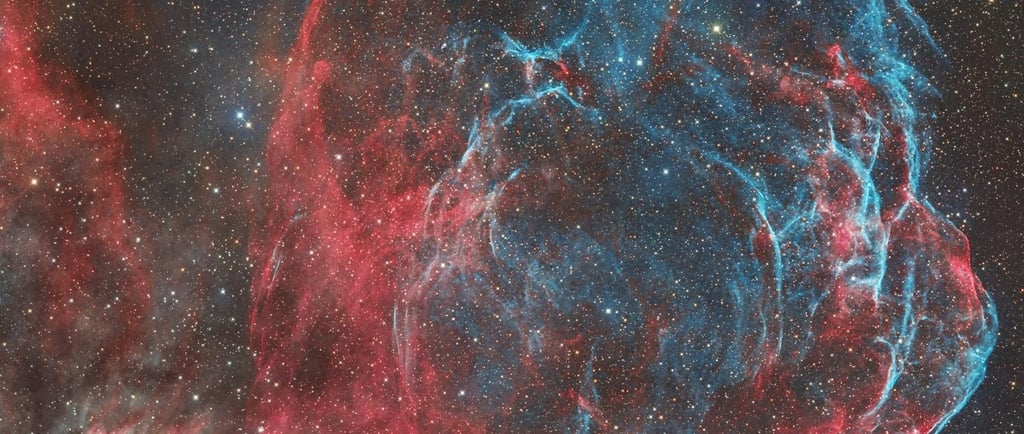SNR G132.7+1.3: A Supernova Remnant


Introduction to SNR G132.7+1.3
SNR G132.7+1.3, also known as HB3, represents one of the most remarkable supernova remnants observable in our galaxy. Situated within the constellation of Cassiopeia, this supernova remnant spans an impressive area measuring 1.5° x 2.0° across the celestial dome, certifying its designation as one of the largest remnants identified to date. The study of SNR G132.7+1.3 not only offers insight into past cosmic events but also aids in our comprehension of stellar evolution and the life cycle of stars.
The Formation of SNR G132.7+1.3
The formation of SNR G132.7+1.3 traces back to a significant stellar explosion, surpassing common novae in terms of energy and impact. When a massive star exhausts its nuclear fuel, it undergoes gravitational collapse. This catastrophic collapse results in a supernova explosion, ejecting the outer layers of the star into the surrounding interstellar medium. The remnants of this explosion, such as SNR G132.7+1.3, manifest as a cloud of gas and dust, expanding outward at high velocities that can reach thousands of kilometers per second.
Significance of Studying SNR G132.7+1.3
Understanding supernova remnants like SNR G132.7+1.3 is crucial for several reasons. Firstly, these remnants contribute to the chemical enrichment of the galaxy, dispersing heavy elements created during the star's lifetime back into space. Secondly, they serve as laboratories for studying non-thermal emission processes which reveal information about the physics of cosmic particles under extreme conditions. The vast scale of SNR G132.7+1.3 allows astronomers to investigate its dynamics and interactions with the surrounding medium effectively. The study of such remnants is not just an academic exercise; it constitutes a crucial aspect of modern astrophysics.
Conclusion
SNR G132.7+1.3 stands as a testament to the dramatic life cycles of stars and the intricate dynamics of our galaxy. Its extensive dimensions and complex structure provide fertile ground for research and observation, helping astronomers unravel the mysteries of supernovae and their remnants. As technology evolves and our observational tools become more sophisticated, the study of SNR G132.7+1.3 will undoubtedly yield even greater insights into the cosmic events that shaped our universe.
